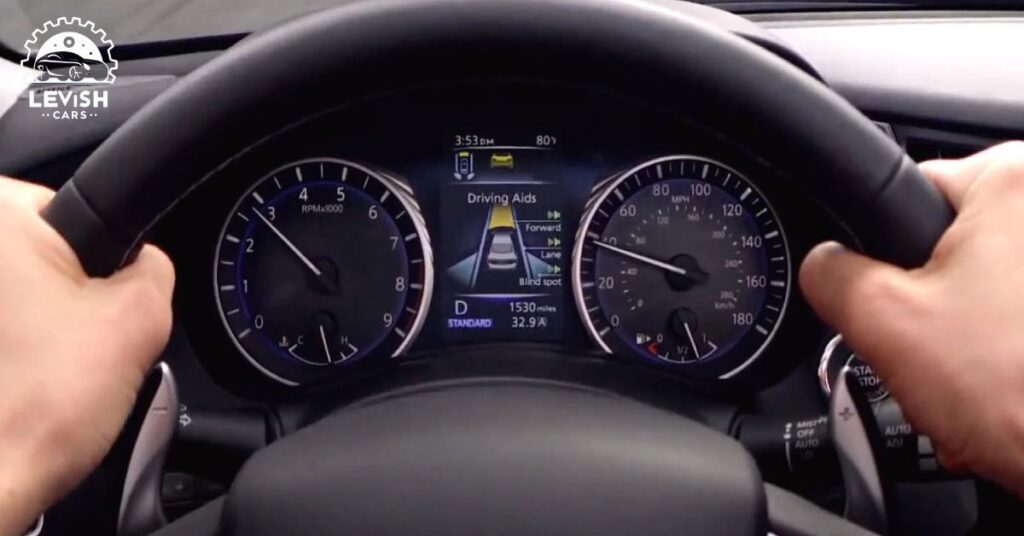Honda Sensing is an advanced suite of safety and driver assistive technologies that equip modern Honda vehicles with innovative features like collision mitigation braking, road departure mitigation, and adaptive cruise control.
This technology aims to reduce accidents and enhance the driving experience. However, even advanced systems can experience technical issues at times. Diagnosing Honda Sensing problems properly is key to restoring normal performance. This overview will explore 11 frequent Honda Sensing problems reported by owners and provide troubleshooting tips to help resolve them.
Learning to address minor glitches in Honda’s sensing system can help drivers continue benefiting from these useful aids. With proper maintenance and care, Honda Sensing’s capabilities can be preserved to keep vehicles and passengers safe.
Easy Solutions to Your Honda Sensing Issues
Though Honda Sensing technologies like collision mitigation and lane keeping assist are advanced systems, they can occasionally malfunction or act irregularly. However, many common issues like faulty sensors, software bugs, and camera obstructions can be fixed with simple solutions.
By consulting owners’ manuals, inspecting components, cleaning cameras, checking settings, or visiting dealerships, drivers can troubleshoot and resolve most Honda Sensing problems on their own.
With basic mechanical checks and resets, these innovative aids can be restored and maintained properly. Knowing easy solutions for glitches preserves Honda Sensing’s capabilities and driver confidence in its safety and convenience features.
1. Honda Sensing System Malfunction Warning

The Honda Sensing system malfunction warning light indicates a general issue with the driver aids. This could stem from a blocked camera or radar sensor, low battery, software glitch, or faulty component.
Start by inspecting the camera and sensors on the windshield and front grille for obstructions. Use a soft cloth to gently clean them. Make sure the camera lens has a clear view of the road. Check other easy fixes like battery voltage and tight connectors.
Consult your owner’s manual for the specific malfunction code to diagnose. Dealership technicians can also run diagnostics to pinpoint the exact sensor or software problem causing the malfunction warning.
2. Adaptive Cruise Control (ACC) Issues

Problems with Honda’s ACC system can manifest as not detecting vehicles ahead, inappropriate speed adjustments, or unexpected disengagement. Radar obstruction is a common cause, so check the grille sensor for blockages.
Heavy rain or snow can also interfere with radar operation. Try cleaning the sensor area gently with a cloth. Make sure the settings are configured properly for your desired following distance and mode.
Consult your manual to run diagnostics and reset the system. Dealers can also troubleshoot issues like faulty radar or miscalibrated cameras if problems persist.
3. Collision Mitigation Braking System (CMBS) False Alarms

The CMBS may activate emergency braking when no hazard is present due to camera or radar disruptions. First, clean the sensors thoroughly and calibrate the system per the manual. Make sure the camera angle is not obstructed or blinded by glare.
Driving in inclement weather may also impede sensors, so reduce sensitivity if needed. If false alarms continue, the dealership can diagnose internal failures in the braking system components. Proper repair is key for restoring normal CMBS performance.
4. Lane Keeping Assist System (LKAS) Inaccuracy

The LKAS helps steer within lane markings, but may veer or disengage unexpectedly. Cleaning the windshield camera and recalibrating the system can resolve basic issues. Check that lane markings are clearly visible to the camera without glare or shadows.
Damaged or faded road lines may impair LKAS. Also try adjusting steering assist levels for light or heavy setting. The dealership can examine camera alignment and software faults if recalibration does not resolve inaccuracies.
5. Road Departure Mitigation System (RDM) Issues

Much like the LKAS, the RDM can malfunction by providing steering or braking assist when unnecessary. Cleaning the windshield camera is the first step in troubleshooting. Make sure the camera has an unimpeded view of lane markings.
Recalibrate and adjust the sensitivity settings as needed. The RDM relies on clear road line visibility, so worn markings can cause problems. For recurring faults, dealership software updates or component replacements may be required to restore proper functionality.
6. Parking Sensor Malfunctions
Faulty parking sensors cause inconsistent proximity warnings or false alarms. First, inspect for dirt, debris, snow, or ice obstructing the sensors. Gently cleaning them with a soft cloth can help. Make sure no covers are blocking sensors on the bumper.
Also check for sensor damage that may occur over time. Recalibrating per the manual resets their sensitivity levels. For recurring issues, dealership technicians can test wiring faults and replace damaged sensors.
7. Blind Spot Information System (BSI) Issues
If the blind spot monitoring lights activate with no vehicle present, cleaning and recalibrating is the first step. Check for obstructions like mud or bumper stickers on rear sensors. Adjust the sensitivity setting to reduce false alarms as needed. During inclement weather, poor radar performance may occur.
For unresolved problems, dealers can diagnose issues with BSI software, radar misalignment, or faulty system components. Proper repair is needed to maintain side and rear detection abilities.
8. Adaptive Cruise Control (ACC) Following Distance Issues

The ACC system may not maintain the preset following interval behind a detected vehicle. Cleaning and recalibrating the radar sensor on the front grille can optimize detection abilities. Make sure the ACC settings align with your desired following distance.
For ongoing issues, the dealership can check the radar wave guide for damage and test ACC software for bugs. Proper calibration and component condition help ACC accurately gauge distances.
9. Lane Departure Warning Malfunctions
A faulty lane departure warning can activate when your vehicle remains centered in the lane. First, clean the windshield camera thoroughly and recalibrate the system. Adjust settings to reduce sensitivity if needed.
Make sure lane markings are clearly visible and the camera lens has full visibility. The dealership can verify proper camera alignment, check for software glitches, and test warning system components to address recurring malfunctions.
10. Traffic Sign Recognition Malfunctions
The traffic sign recognition system may fail to detect signs, display incorrect speeds, or show unclear images. Calibrating the windshield camera often resolves basic issues. Make sure the camera view is unobstructed by mounts or tints.
Cleaning smears and removing windshield stickers can optimize visibility. Dealers can update software and test the camera feed if problems continue. Keeping the camera clear and recalibrated allows accurate sign detection.
11. False Forward Collision Warning

A false FCW may sound the alarm even when no obstacle is ahead. This can stem from temporary sensor disruptions. Clean the radar and camera gently to refresh their capabilities. Make sure sensors have a clear line of sight.
Adjust the FCW sensitivity to reduce false alarms. The dealership can run diagnostics to check for obstructions, misalignments, and component faults if resetting does not resolve the issue. With all systems working optimally, the FCW provides reliable collision alerts.
Frequently Asked Questions
How do you reset a Honda Sensing problem?
To reset a Honda Sensing problem, follow the owner’s manual instructions to recalibrate the cameras and radar sensors.
What is Honda Sensing system?
Honda Sensing is a driver assist technology package with safety features like collision mitigation braking and lane keeping assist.
How do I activate my Honda Sensing?
Honda Sensing activates automatically when the car is started as long as all components like cameras are unobstructed.
Can you remove Honda Sensing?
Honda Sensing cannot be removed from vehicles it comes equipped on, since the technology is integrated into the design.
Final Thoughts
Though Honda Sensing employs advanced technologies like radar, cameras, and sensors to aid drivers, even sophisticated systems can malfunction. However, many common issues can be resolved with simple solutions.
By keeping components clean, consulting manuals, adjusting settings, and running recalibrations, minor glitches can be fixed without professional help. With routine care and maintenance, Honda Sensing’s capabilities can be preserved.
Understanding the troubleshooting process for problems makes Honda Sensing easier to manage. While major component damage may require dealership repair, drivers can address most hiccups themselves.
A few basic steps like cleaning cameras, inspecting settings, or resetting the system often get Honda Sensing back on track. Drivers can continue benefiting from the safety and convenience offered by this technology. With the right approach, Honda Sensing can be kept performing optimally to handle any issue encountered along the road.

Hey there! I have 5 years of experienced repairing all makes and models. Specializes in engine diagnostics, brake repair, electrical systems, and teaching DIY maintenance tips. Passionate about keeping cars running safely.








